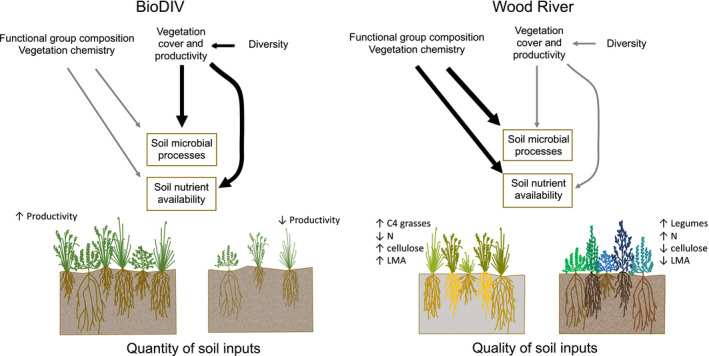Fig. 1.

Both the quantity (productivity) and quality (phylogenetic, functional and chemical composition) of inputs from aboveground vegetation into the soil are important in influencing belowground microbial processes and nutrient cycling. However, the relative importance of these characteristics of inputs varies among systems. Shown are distinct hypotheses for how attributes of vegetation that can be remotely sensed influence and are therefore useful in predicting soil microbial processes and nutrient availability in two contrasting prairie grassland diversity experiments. The BioDIV experiment at Cedar Creek varies in species density from one to 16 species per 81 m2, which has led to high variation among plots in annual productivity over time (from 25 to 283 g/m2). In this system, productivity (the quantity of inputs) is hypothesized to be the dominant driver of variation in belowground processes. The Wood River experiment has higher overall species density (one to 13 species per 1 m2 or 10–46 species per 1,200 m2) and productivity (285–1,079 g/m2). As a consequence, the total quantity of inputs is less likely to be limiting, and functional group composition and the resulting variation in vegetation chemistry (quality of inputs) are hypothesized to play a more dominant role in driving belowground processes. These conceptual diagrams are the basis for our structural equation models presented in Fig. 7.
